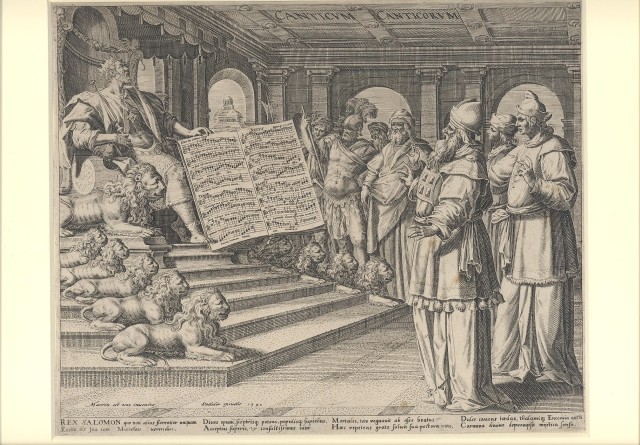
Title page of Luther’s Deudsche Messe vnd Ordnung Gottis Diensts MR220.d.50.1.
As part of Open Cambridge next week (12-13 September), the University Library will be hosting a Tudor Treasures tour. (It’s currently fully booked, but check the UL’s Facebook page just in case any cancellations occur).
I was asked to look out some of the Music Department’s “Tudor treasures” to complement items displayed by other departments. An early item of printed music is Martin Luther’s Deudsche Messe vnd Ordnung Gottis Diensts, published by Michael Lotter in Wittenberg in 1526. This first edition sets out Luther’s views on how the Mass should be conducted, and also includes chants and hymns.
Slightly later is the first work that we have published in London in 1579. The Psalmes of David in English meter, composed by William Daman, and dedicated to a London goldsmith, John Bull (not the composer, although, according to Thurston Dart, he may have been his father). Daman was an Italian (or possibly Walloon) immigrant, who in 1576 had become a recorder player at the court of Elizabeth I. He was closely connected to that other great immigrant recorder-playing family, the Bassanos. (There’s lots more information on the Bassanos and Daman in David Lasocki’s article The recorder consort at the English court, 1540-1673). Daman’s psalm settings were poorly received, and he spent some time revising them. The revised settings were published posthumously in 1591.
One of our oldest and rarest items is a choirbook containing Mass settings by Tomás Luis de Victoria. This was allegedly originally from Cadiz Cathedral, and arrived in England in the late 16th century, before becoming the property of a former vicar of Haslingfield, who then presented the work to the UL, where it formed an early part of our collections.

Osculetur me osculo oris sui / Pevernage. A picture motet. MRA.210.55.1
Also in our collection is an unusual illustration, a picture motet by Andreas Pevernage, Osculetur me osculo oris sui (Antwerp, Johann Sadeler, [1590]). It’s fascinating as an illustration of how a choir book would have been used, admittedly in a slightly over-blown style; but even more fascinating is that the miniscule music printing is the motet itself, engraved with tiny notes for 5 part-voices (the soprano part is sung as a round), it could be copied and used for music making. Nowadays with the advent of scanning, the illustration can be blown up, and the music leaps to life.
Elsewhere in the UL, we have copies of Thoinot Arbeau’s Orchesographie, published Langres : I. des preyz, [1588]. A poignant reminder of sixteenth century France, it was published in an English translation in 1925, when it inspired Peter Warlock to write his Capriol suite, based closely on the original music. Warlock set the music for piano 4-hands, before arranging it for orchestra.
If these treasures aren’t enough for you, there’s also an unusual setting of Macbeth featuring baboons; one of the more esoteric items received in the 21st century under the Legal Deposit Act. So, if you have a moment, and can find a spare place, please come along to Tudor Treasures at the UL.
MJ

Pingback: A Choirbook fit for a King? | Cambridge University Library Special Collections